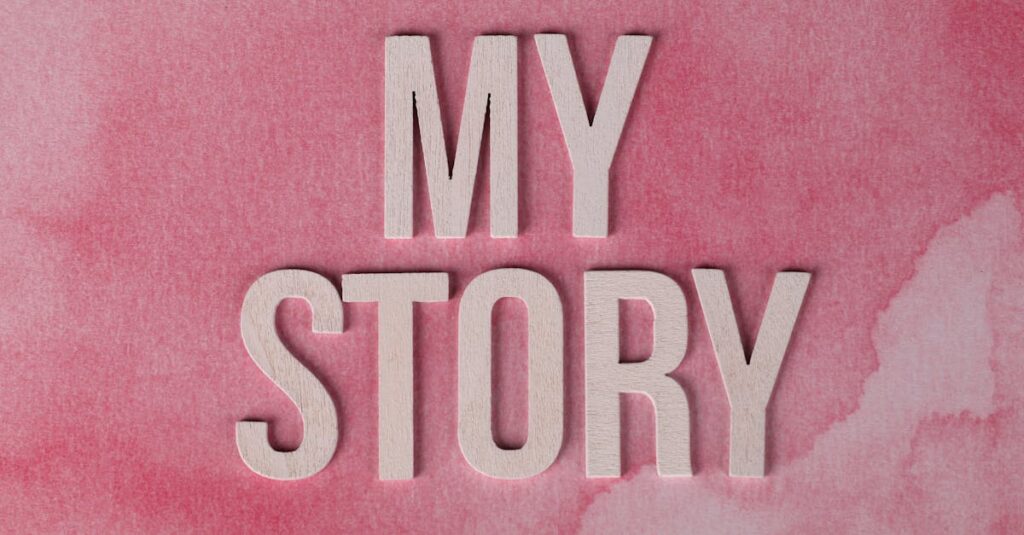Table of Contents
ToggleIn the world of design, narrative wireframes are like the secret sauce that transforms bland layouts into deliciously engaging stories. Think of them as the storyboard for your digital masterpiece, guiding users through a seamless journey while keeping them entertained. If you’ve ever wondered how to make your website not just functional but also captivating, you’re in for a treat.
What Are Narrative Wireframes?
Narrative wireframes serve as innovative tools in design that elevate user engagement. By turning basic layouts into compelling stories, these wireframes guide users through a seamless experience.
Definition and Purpose
Narrative wireframes represent a visual storytelling approach in digital design. They combine traditional wireframe elements with narrative structure, showcasing user interactions within a context. The purpose involves illustrating how users navigate a website, highlighting key moments and emotional triggers. This aids designers in envisioning the flow of information and the overall user journey. By doing this, they create a more engaging experience that resonates with users.
Importance in Design
Narrative wireframes hold significant importance for several reasons. They facilitate a deeper understanding of user needs, helping designers create intuitive platforms. These wireframes emphasize user emotions, allowing designers to anticipate reactions at various stages. Clarity is another advantage; narrative wireframes provide a clear roadmap, reducing ambiguity in the design process. Incorporating these elements leads to enhanced storytelling, ultimately fostering a stronger connection between the product and its users.
Key Features of Narrative Wireframes
Narrative wireframes incorporate essential elements that enhance the overall design process. Their features contribute to an engaging and intuitive user experience.
Visual Storytelling Elements
Visual storytelling elements play a vital role in narrative wireframes. Each element illustrates key scenes and user interactions within a structured framework. Designers leverage graphical representations, like icons and images, to evoke emotions and convey messages effectively. Story arcs and character interactions emerge clearly through carefully crafted layouts. Additionally, incorporating various color palettes helps highlight important sections and guide user attention. Utilizing typography in different sizes and styles enhances readability and draws focus to critical information.
Interactive Components
Interactive components encourage users to engage actively with narrative wireframes. Designers include buttons, sliders, and clickable areas to mimic real interactions. Each interactive feature provides a sense of flow, making navigation seamless. Feedback elements, such as animations and transition effects, create a dynamic user experience that feels responsive. Users appreciate real-time updates that convey progress and changes in the narrative. Providing opportunities for exploration through menus and links deepens self-directed engagement. Ultimately, these interactive features facilitate a more immersive storytelling experience.
Benefits of Using Narrative Wireframes
Narrative wireframes offer several key advantages that enhance the design process and improve user experiences.
Enhanced User Engagement
Enhanced user engagement occurs through the use of narrative wireframes. They transform standard layouts into emotional journeys, capturing user attention. Users connect more deeply with content, as wireframes illustrate key interactions with visual storytelling. Engaging elements, like character arcs, create relatable scenarios that resonate with audiences. Emotional triggers guide users through experiences, leading to greater satisfaction. By prioritizing meaningful interactions, narrative wireframes foster memorable connections between users and products.
Improved Collaboration Among Teams
Improved collaboration among teams becomes possible with narrative wireframes. Designers, developers, and stakeholders align on objectives through shared visual representations. Clear communication emerges as teams discuss user journeys and identify critical interactions. Tools for collaboration, such as annotations and feedback loops, streamline design iterations and ensure everyone’s input is valued. Enhanced understanding of user needs facilitates collective problem-solving, fostering a more cohesive design process. Ultimately, narrative wireframes bridge gaps, ensuring all voices contribute to delivering exceptional user experiences.
Best Practices for Creating Narrative Wireframes
Creating effective narrative wireframes involves employing the right tools and adhering to design tips that enhance user experience.
Tools and Software Recommendations
Figma and Sketch serve as top choices for crafting narrative wireframes due to their flexibility and collaborative features. InVision provides excellent prototyping capabilities that allow for interactive storytelling. Adobe XD integrates well with other Adobe products, making it a great option for those already using Adobe software. Miro offers a visual whiteboard platform that supports brainstorming and team collaboration. These tools enable designers to visualize user journeys and engage stakeholders effectively.
Tips for Effective Design
Diverse user scenarios should shape the design of narrative wireframes. Each wireframe must communicate a clear narrative flow, guiding users through interactions. Prioritizing key moments keeps the narrative focused and engaging. Consistent use of colors and typography enhances readability while maintaining brand identity. Incorporating interactive elements increases user engagement and facilitates exploration. Regular feedback loops with team members promote refinements, ensuring that the design aligns with user expectations.
Conclusion
Narrative wireframes represent a transformative approach to design that goes beyond traditional layouts. By weaving storytelling into the user experience designers can create more engaging and memorable interactions. This method not only clarifies the user journey but also fosters deeper connections between users and content.
Utilizing narrative wireframes enhances collaboration among teams ensuring everyone is aligned on objectives. With the right tools and best practices in place designers can effectively communicate their vision and refine their projects through continuous feedback. Embracing this innovative technique ultimately leads to websites that are not only functional but also captivating and emotionally resonant.




